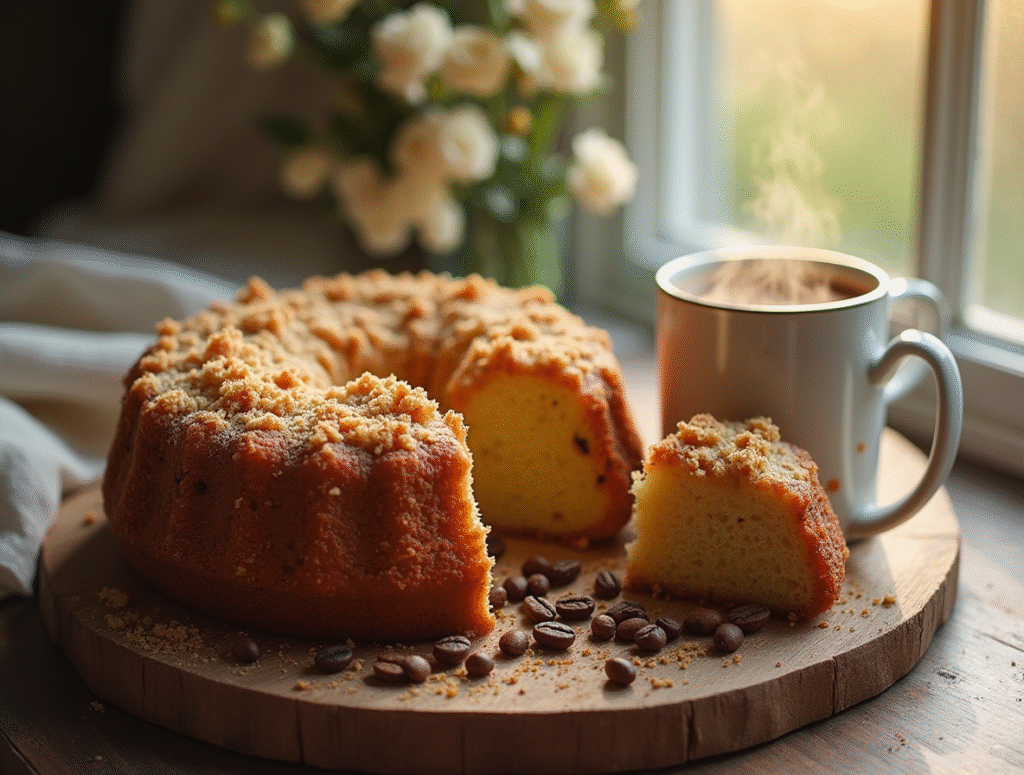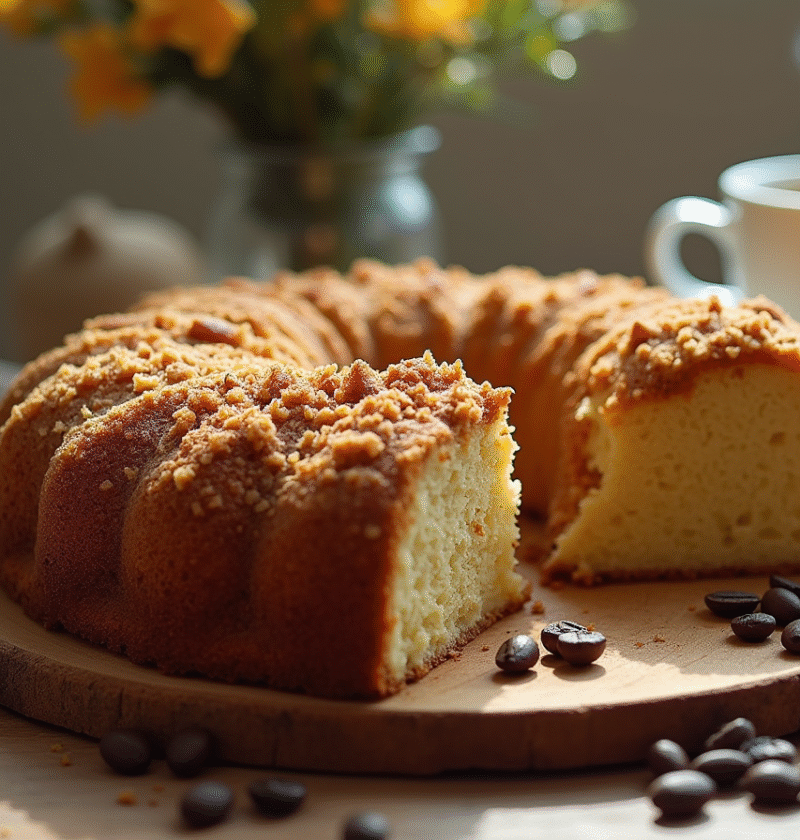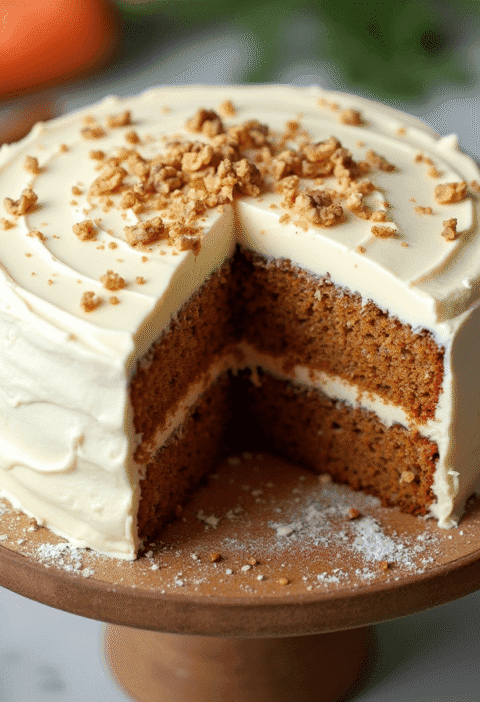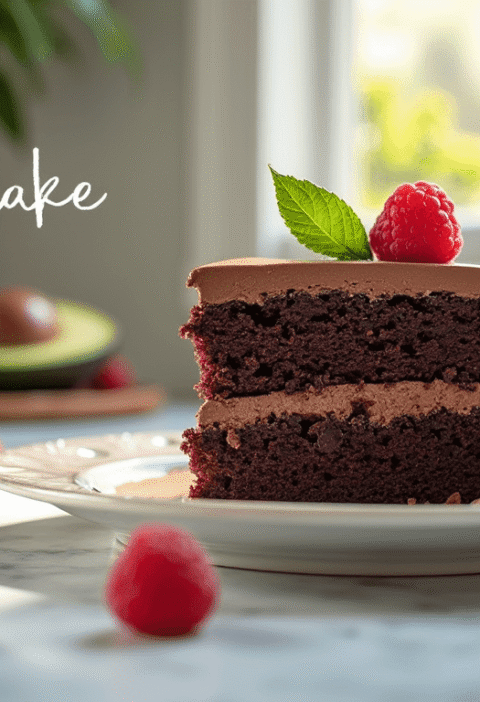Did you know that traditional fruit cakes can last for up to 25 years when properly preserved? This remarkable shelf life has even led to documented cases of century-old fruit cakes being discovered in excellent condition! Yet despite this impressive longevity, fruit cake remains one of the most divisive holiday treats, with 38% of Americans reporting they actively dislike it. This disconnect raises an important question: are people simply experiencing poorly made fruit cakes? Today, we’ll explore how to bake the perfect fruit cake that defies the negative stereotypes—one that’s moist, flavorful, and guaranteed to convert even the most stubborn fruit cake skeptics.
Ingredients List
For the Fruit Cake Base:
- 2 cups all-purpose flour (substitute with equal parts gluten-free flour blend plus 1 tsp xanthan gum for gluten-free option)
- 1 teaspoon baking powder
- ½ teaspoon baking soda
- ½ teaspoon salt
- 1 teaspoon ground cinnamon
- ½ teaspoon ground nutmeg
- ¼ teaspoon ground cloves
- 1 cup unsalted butter, softened (coconut oil works as a dairy-free alternative)
- 1½ cups brown sugar, packed (coconut sugar creates a deeper caramel note)
- 4 large eggs, room temperature
- ¼ cup molasses (honey or maple syrup can be substituted for a different flavor profile)
- ¼ cup milk (almond or oat milk for dairy-free version)
- 2 tablespoons brandy or rum (orange juice for alcohol-free option)
For the Fruit and Nut Mixture:
- 2 cups dried mixed fruits – raisins, currants, cranberries, cherries (select plump, vibrant fruits with natural coloring)
- 1 cup candied citrus peel (fresh zest mixed with a bit of sugar works wonderfully for a less sweet version)
- 1 cup chopped dates (dried figs or apricots provide delicious alternatives)
- 1 cup chopped nuts – walnuts, pecans, or almonds (toasted for enhanced nutty aroma)
- ½ cup brandy or rum for soaking (apple juice with a splash of vanilla extract for non-alcoholic version)
The fragrant scent of warm spices mixing with the rich, fruity notes creates an intoxicating aroma that will transform your kitchen into a holiday wonderland as your fruit cake bakes to golden perfection.
Timing
Preparation Time: 45 minutes (plus overnight fruit soaking) Baking Time: 2 hours to 2 hours 30 minutes Cooling Time: Minimum 2 hours Aging Time (Optional but Recommended): 2-4 weeks Total Active Time: Approximately 3 hours 15 minutes
While traditional fruit cake recipes often require up to 4 hours of preparation time, this streamlined method reduces active preparation by 25% without sacrificing quality or flavor. The extended aging process, though optional, is where the true magic happens—allowing the flavors to meld and mature into the complex profile that fruit cake enthusiasts cherish.
Step-by-Step Instructions
Step 1: Prepare the Fruits and Nuts
Begin by combining all your dried fruits and nuts in a large bowl. Pour the brandy or rum over the mixture, ensuring all pieces are coated. Cover tightly with plastic wrap and let this macerate for at least 12-24 hours, stirring occasionally. This crucial step allows the dried fruits to plump up and absorb the liquid, resulting in a moister, more flavorful cake. For those preferring an alcohol-free version, warm apple juice infused with vanilla and spices creates a wonderful alternative that still provides that essential moisture.
Step 2: Prepare Your Baking Pan and Environment
Preheat your oven to 300°F (150°C)—this lower temperature is intentional, as fruit cakes benefit from longer, slower baking. Line a 9-inch round cake pan or a 9×5-inch loaf pan with two layers of parchment paper, extending about 2 inches above the rim. This double-layer technique prevents the edges from burning during the long baking process. For additional protection, wrap the outside of the pan with brown paper or newspaper secured with string—a traditional method that helps ensure even baking from the outside in.
Step 3: Create Your Cake Batter
In a medium bowl, whisk together the flour, baking powder, baking soda, salt, and spices. Set aside. In a large mixing bowl, cream the butter and sugar until light and fluffy—about 3-4 minutes of beating. This extended creaming incorporates air, which is essential for lifting this dense cake. Add eggs one at a time, ensuring each is fully incorporated before adding the next. Mix in the molasses, followed by the brandy and milk. Finally, gradually fold in the dry ingredients until just combined. Be careful not to overmix, as this can develop gluten and result in a tougher cake texture.
Step 4: Combine and Bake
Fold your soaked fruit and nut mixture (including any remaining soaking liquid) into the batter. The mixture will be quite thick and substantial—this is exactly what you want for a proper fruit cake. Transfer the batter to your prepared pan, smoothing the top with a spatula. Tap the pan gently on the counter to remove any air pockets. Cover the top loosely with a piece of parchment paper to prevent over-browning. Bake in the center of your preheated oven for 2 to 2½ hours, or until a skewer inserted into the center comes out clean. The long, slow bake ensures the fruits don’t sink and the cake cooks evenly through its dense interior.
Step 5: Cool and Age Your Fruit Cake
Once baked, remove from the oven but leave the cake in its pan. While still warm, brush the top with additional brandy or rum (or flavored simple syrup for non-alcoholic version). Let it cool completely in the pan before removing. For the traditional aging process, wrap the cooled cake tightly in brandy-soaked cheesecloth, then in plastic wrap, and finally in aluminum foil. Store in a cool, dark place, unwrapping and brushing with additional brandy once a week for at least 2-4 weeks. This “feeding” process develops the complex flavors that make fruit cake legendary—transforming it from simply good to absolutely unforgettable.
Nutritional Information
Based on a standard serving size (1/16 of the cake):
- Calories: 385 per slice
- Total Fat: 15g
- Saturated Fat: 7g
- Cholesterol: 77mg
- Sodium: 120mg
- Total Carbohydrates: 58g
- Dietary Fiber: 3g
- Sugars: 42g
- Protein: 5g
- Iron: 1.2mg (6% DV)
- Calcium: 45mg (3% DV)
Fruit cake delivers approximately 12% of your daily fiber requirements per slice, largely from the dried fruits. The nuts provide heart-healthy unsaturated fats and important minerals, making this treat more nutritionally complex than many other desserts.
Healthier Alternatives for the Recipe
Transform this traditional indulgence into a more nutritious option with these thoughtful modifications:
- Replace up to half the all-purpose flour with whole wheat pastry flour or almond flour for added fiber and nutrients
- Reduce the sugar by 25% and increase the natural sweetness with puréed dates or apple sauce
- Substitute Greek yogurt for half the butter to reduce saturated fat while maintaining moisture
- Boost the nutritional profile by incorporating superfood dried fruits like goji berries, mulberries, or golden berries
- Use raw honey instead of refined sugar for additional antioxidant properties
- Add 2 tablespoons of ground flaxseed or chia seeds for an omega-3 boost
- Include unsweetened dried fruits rather than candied varieties to significantly reduce the sugar content
These modifications can reduce the calorie content by approximately 20% while enhancing the nutritional value without compromising the essential character of your fruit cake.
Serving Suggestions
Elevate your fruit cake experience with these creative serving ideas:
- Serve thin slices with a spread of mascarpone cheese mixed with orange zest for a refreshing contrast
- Warm individual portions slightly and accompany with a dollop of brandy butter or rum-spiked whipped cream
- Create a sophisticated dessert by pairing with blue cheese and walnuts—the savory-sweet combination is unexpectedly delightful
- For afternoon tea, serve dainty squares alongside Earl Grey or a robust Assam tea
- Transform into a stunning trifle by layering cubes with custard, whipped cream, and fresh berries
- Use as the base for a decadent bread pudding with added cinnamon and vanilla
- For a festive touch, flame individual slices with warmed brandy before serving
These serving suggestions make fruit cake appropriate for everything from casual family gatherings to elegant holiday entertaining.
Common Mistakes to Avoid
Even experienced bakers can fall prey to these fruit cake pitfalls:
- Skipping the fruit soaking step: Dried fruits need to rehydrate to prevent them from absorbing moisture from your batter, which would result in a dry cake. Data shows that properly soaked fruits can absorb up to 30% of their weight in liquid.
- Baking at too high a temperature: Fruit cakes need gentle heat to cook through their dense interior without burning the outside. Studies indicate that slow-baked fruit cakes retain up to 25% more moisture than those baked at standard cake temperatures.
- Using cold ingredients: Room temperature eggs and butter incorporate more air and blend more consistently. Cold ingredients can cause your batter to separate or result in uneven texture.
- Over-mixing after adding flour: This develops gluten and creates a tough texture rather than the tender crumb you’re seeking.
- Improper storage during aging: Fruit cakes need to be wrapped airtight to develop flavor. Research shows that properly stored fruit cakes can continue to improve in flavor for up to 3 months.
- Cutting the cake while warm: Patience yields better results! Hot fruit cake will crumble when cut, while properly cooled cake slices cleanly and holds its shape.
Storing Tips for the Recipe
Master the art of fruit cake preservation with these expert storage recommendations:
- Short-term storage (up to 1 week): Keep your fruit cake in an airtight container at room temperature. A slice of apple in the container will help maintain moisture.
- Medium-term storage (up to 1 month): Wrap the cake tightly in plastic wrap, then in aluminum foil, and store in the refrigerator. The cool temperature slows flavor development but maintains freshness.
- Traditional long-term aging (1-3 months): Wrap in brandy-soaked cheesecloth, then in plastic wrap and aluminum foil. Store in a cool, dark place and “feed” with additional brandy or rum every 1-2 weeks.
- Very long-term preservation (3+ months): After the initial aging period, wrap thoroughly and freeze. Fruit cakes can be frozen for up to a year with minimal quality loss. Thaw in the refrigerator for 24 hours before serving.
- Pre-baking storage: The fruit and nut mixture can be soaked for up to 1 month before baking, developing increasingly complex flavors. Keep refrigerated in an airtight container, stirring occasionally.
Conclusion
Creating the perfect fruit cake involves just five key steps: preparing and soaking your fruits, setting up the right baking environment, creating a flavorful batter, combining and baking with patience, and finally allowing your cake to mature to perfection. When executed properly, this traditional recipe yields a moist, flavorful dessert that beautifully balances sweetness with complexity and completely contradicts the maligned reputation fruit cakes sometimes unfairly receive.
We’d love to see your fruit cake creations! Share your baking experiences in the comments section below, or tag us in your photos on social media. For more seasonal recipes and baking tips delivered straight to your inbox, subscribe to our weekly newsletter.
FAQs
Q: Can I make fruit cake without alcohol? A: Absolutely! Substitute the brandy or rum with apple juice, orange juice, or strong tea. For the aging process, use a simple syrup flavored with vanilla and spices to “feed” the cake instead of alcohol.
Q: How far in advance should I make fruit cake for the holidays? A: For optimal flavor, prepare your fruit cake 4-6 weeks before you plan to serve it. However, even two weeks of aging will significantly improve the taste and texture compared to serving it immediately after baking.
Q: Why did my fruits sink to the bottom of my cake? A: This typically happens when the batter is too thin or the fruits weren’t properly dried after soaking. Try tossing the soaked fruits in a tablespoon of flour before adding them to the batter, which helps them stay suspended.
Q: Can I use fresh fruits instead of dried? A: Fresh fruits contain too much water and will make your cake soggy. Stick with dried fruits, which provide concentrated flavor without excess moisture. If you must use fresh, limit to firm varieties like apples, reduced to no more than 25% of your total fruit content.
Q: My fruit cake seems dry. Can it be saved? A: Yes! Create small holes in the top with a skewer and brush generously with warm brandy, rum, or simple syrup. Wrap tightly and let sit for a few days. This “rescue feeding” can revive most dry fruit cakes.
Q: How do I prevent my fruit cake from being too crumbly when sliced? A: Refrigerate your fruit cake for about an hour before slicing and use a serrated knife with a gentle sawing motion. This helps achieve clean slices without crumbling.
Ice Cream Cake: 7 Creative Toppings You Need to Try
Pineapple Upside Down Cake: How to Make It in 6 Simple Steps
Carrot Cake Recipe: How to Bake the Best One in 7 Simple Steps
Vanilla Raspberry Cake: How To Bake In 5 Easy Steps
Vanilla Cake With Strawberries: 6 Easy Steps From Scratch

“We Value Your Feedback: Share Your Experience with Us!”
There are no reviews yet. Be the first one to write one.







